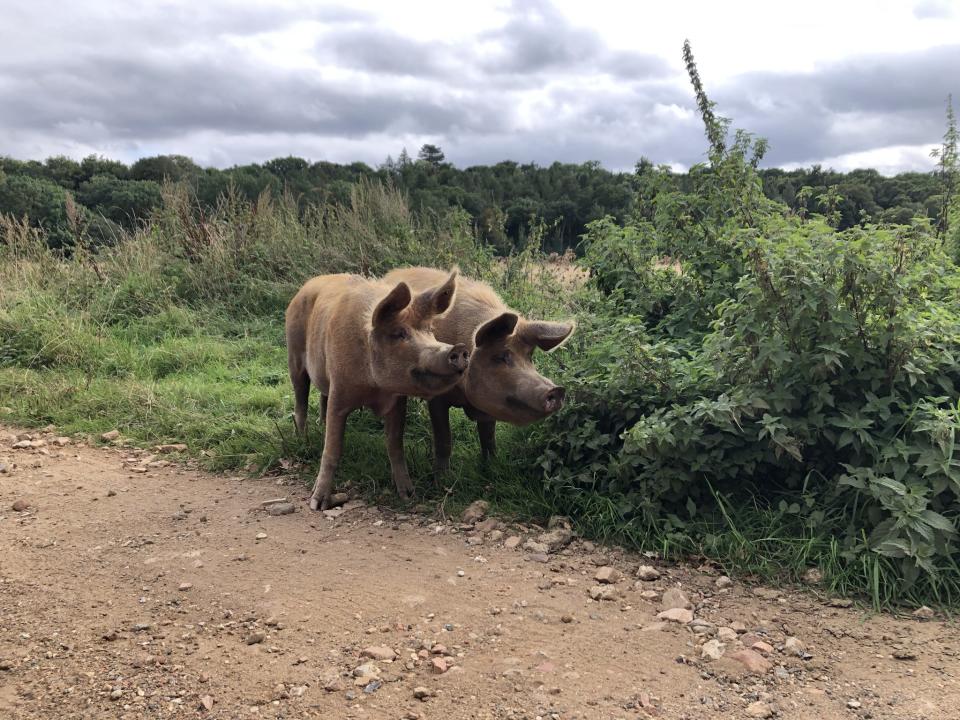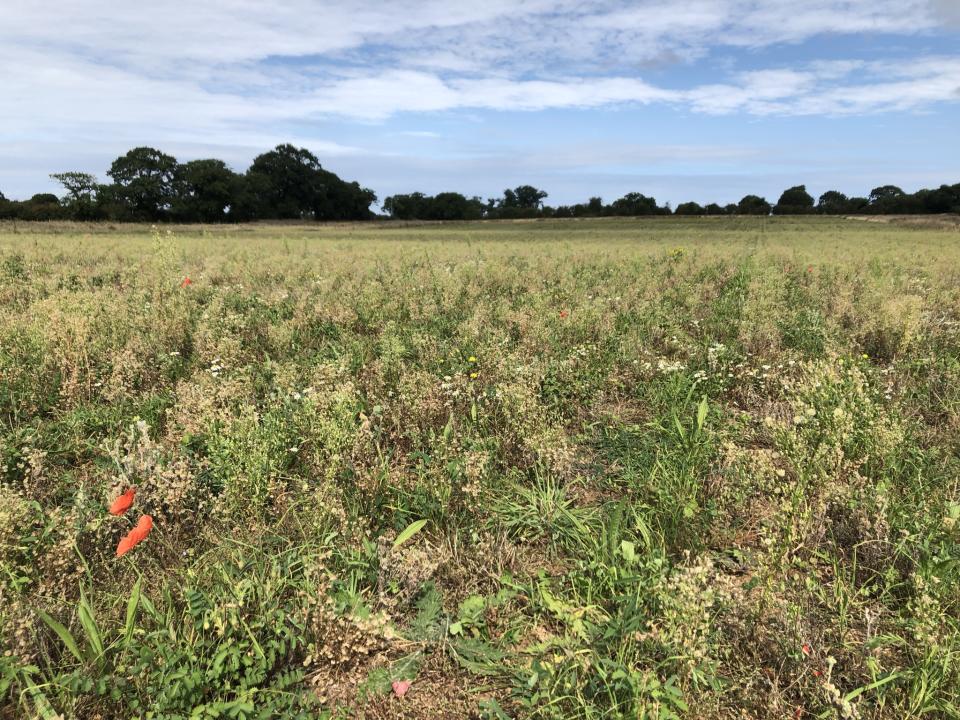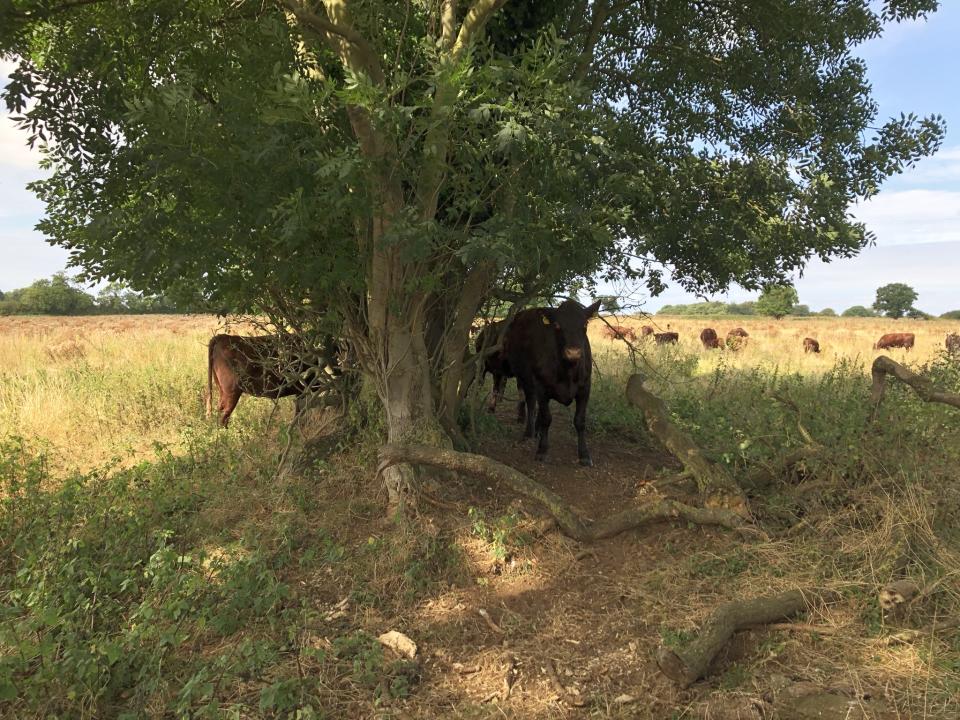Regenerative farming and rewilding deployed to help climate and wildlife
“Regenerative farming” methods and handing unproductive land back to nature are being used to boost wildlife and store carbon in a large-scale countryside project.
Nature-based solutions to climate change such as regenerative farming and “rewilding”, as well as creating woodlands and restoring peatlands, are gaining prominence as ways to capture carbon emissions at the same time as tackling nature declines, and as landowners face changes in subsidies to focus on delivering for the environment.
The team on the 4,000-acre Wild Ken Hill project in Norfolk are deploying farming techniques to restore healthy soils in arable fields so they will lock up carbon and provide natural nutrients for crops instead of synthetic fertilisers.
Every field has been mapped into rectangles for crops to make the most efficient use of the farm’s machinery, and the areas around the edges provide margins of wildflowers and plants for birds and bumblebees in the shaded or more unproductive parts of the landscape.
They have also stopped farming an unproductive 500 acres, and are letting natural processes take over so it “rewilds” into wood pasture, alongside another 500 acres of existing woodland.
Exmoor ponies, red poll cattle and even a handful of Tamworth pigs roam the rewilding part of the estate, grazing the land to create natural pasture which will benefit wildlife, while saplings are already beginning to appear in the meadows in former arable fields.
And in a large enclosure in the woodland, two families of beavers are engineering the landscape, building dams and creating ponds and water channels that attract dragonflies, water vole and otter.

A key part of the project is the shift to regenerative agriculture on the 2,500 acres of land that remains in arable production, a movement which farms manager Nick Padwick says the Wild Ken Hill team have really embraced.
They have stopped ploughing to prevent damage to the soil food web and the release of carbon, and are using cover crops which keep capturing carbon from the air and turning it into organic matter in the soil after the main crop has been harvested.
Sheep are being brought on to feed on the cover crops, eating them down and providing natural fertiliser before new main crops are sown, while barley and peas are planted alongside each other to boost nutrients.
The idea is to recreate healthy soils, with plants taking carbon from the air into the soil where fungi helps store it and supporting a web of tiny soil life which provides nutrients for crops as well as food for other wildlife.

That is in contrast to much of the UK where single crops are grown, often using pesticides which damage the soil life, and the ground is ploughed and left bare after harvest, releasing carbon instead of capturing it.
This creates a need for synthetic fertilisers – producing more greenhouse gases.
Mr Padwick said: “Every time you drag a cultivator, plough a field you are disturbing the soil and the soil life.

“You’re stirring it up, you’re breaking fungal spores, you’re damaging structures, and every time you do that we’re releasing carbon. We don’t want to do that anymore.”
Regenerative farming has the potential to increase yields, as well as deliver financial benefits, with savings on synthetic fertilisers, tractor diesel and plough metal which all come with a carbon cost too, he said.
There are also efficiency savings – as well as the wildlife benefit – from leaving the land around the edge of fields uncropped.
For Wild Ken Hill’s conservation lead and ecologist Lloyd Park, regenerative farming is a key part of the overall scheme, which also includes the rewilding area and a managed conservation site on the coastal marshes.

“Rewilding projects and nature reserves alone are fantastic places, but 75% of the UK’s land use is farming, so that’s where you’ve got to make the biggest change in the shortest amount of time for nature recovery.
“Farming in the regenerative way, in all aspects of the regenerative way, that is what is going to help to restore our countryside to a place that can be a fantastic area for wildlife, because it’s fast becoming not,” he said.
Meanwhile rewilding is something farmers could do where they were struggling to produce food on the land, he said.
“Rewilding is, as we see it, a low-cost way for biodiversity increase, and we know we are on a massive tipping point at the moment in terms of biodiversity loss.”

Mr Padwick said the rewilding area would also have benefits for carbon storage in soils, trees and plants.
He said the organic cattle will provide meat for sale – in answer to those who warn that farmers should not abandon food production on the land.
But he added: “We’ve taken very unproductive land out of production, we have people very often say to us that you’re farmers you should be growing food, you’ve taken all this land out of production.
“Our kickback to that is let’s just wait and see, because we think we can produce as much as we’re producing from a smaller area and do all this amazing work for the environment.”

 Yahoo Movies
Yahoo Movies 
